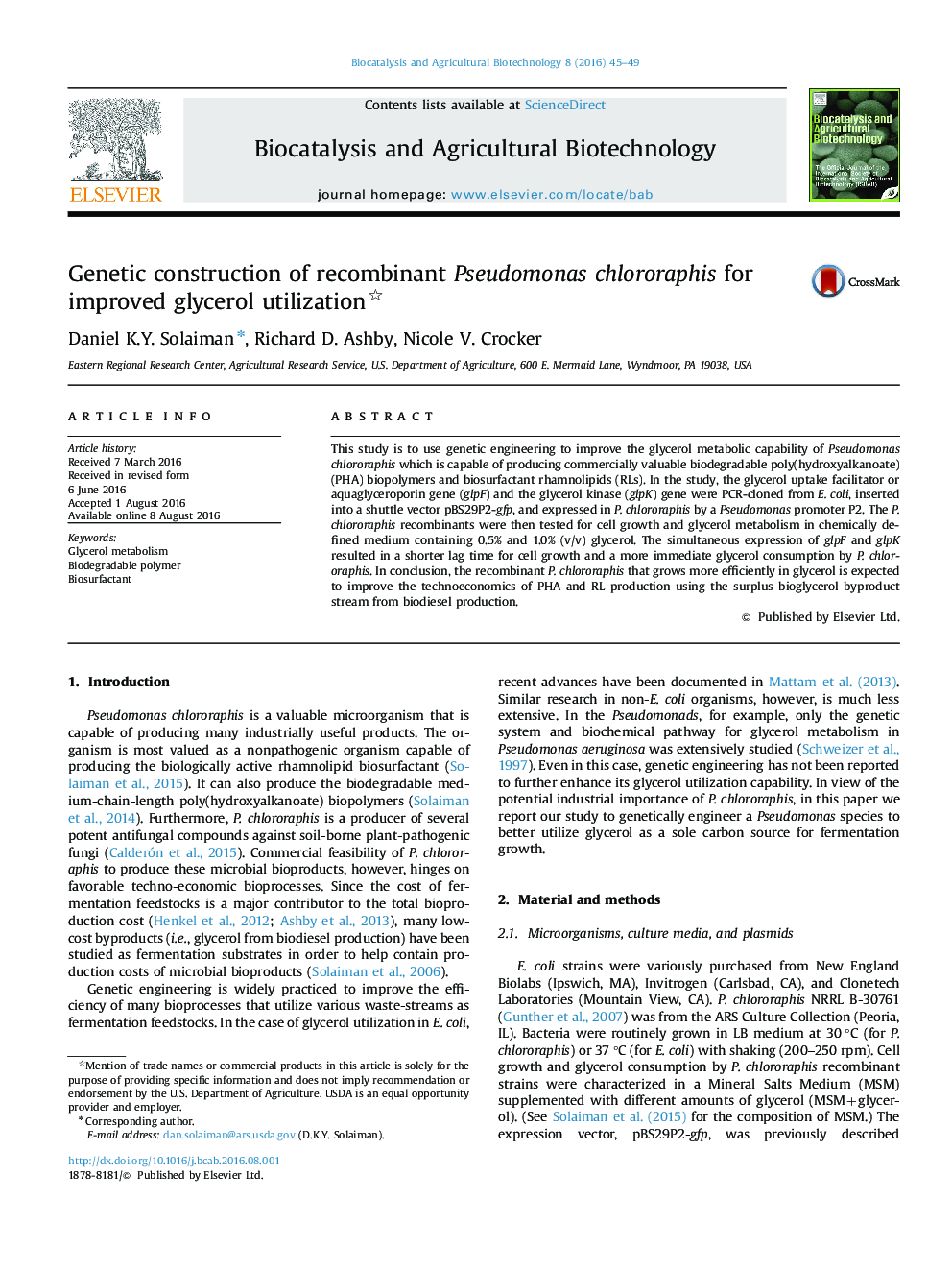| Article ID | Journal | Published Year | Pages | File Type |
|---|---|---|---|---|
| 2075276 | Biocatalysis and Agricultural Biotechnology | 2016 | 5 Pages |
This study is to use genetic engineering to improve the glycerol metabolic capability of Pseudomonas chlororaphis which is capable of producing commercially valuable biodegradable poly(hydroxyalkanoate) (PHA) biopolymers and biosurfactant rhamnolipids (RLs). In the study, the glycerol uptake facilitator or aquaglyceroporin gene (glpF) and the glycerol kinase (glpK) gene were PCR-cloned from E. coli, inserted into a shuttle vector pBS29P2-gfp, and expressed in P. chlororaphis by a Pseudomonas promoter P2. The P. chlororaphis recombinants were then tested for cell growth and glycerol metabolism in chemically defined medium containing 0.5% and 1.0% (v/v) glycerol. The simultaneous expression of glpF and glpK resulted in a shorter lag time for cell growth and a more immediate glycerol consumption by P. chlororaphis. In conclusion, the recombinant P. chlororaphis that grows more efficiently in glycerol is expected to improve the technoeconomics of PHA and RL production using the surplus bioglycerol byproduct stream from biodiesel production.
